George Morris is a trainer, but he is first and foremost, a rider, and is always happy to jump on and demonstrate that he can still walk-the-walk.
This time he chose Blair Richardson’s Spend Big – certainly not the soft option, but then again, George loves hot Thoroughbred horses:
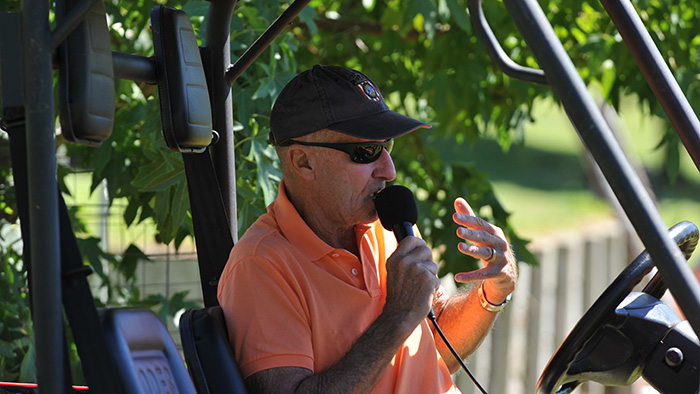
“This horse is quite hot with lots of natural impulsion, you just regulate it, take and give – quickly. I want an ordinary trot. Not what you see in dressage tests, that’s a running trot. I want the horse a little under the rhythm to encourage self-carriage. He has to accept my leg without flinching, he is a typical tense Thoroughbred type.
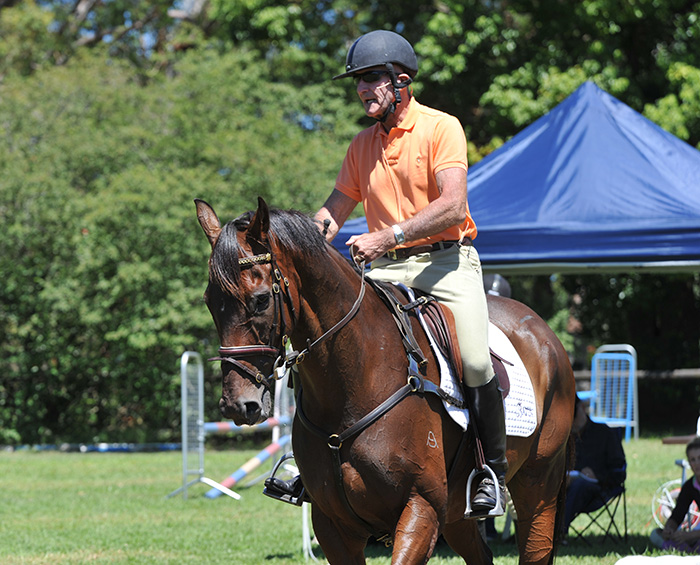
Shoulder-in is one of the best exercises to get them to accept leg – and when they do, they are not tense to the leg. Watch my tact with this horse – you mustn’t muscle horses – it has to be tact. Both hands advance, both hands come back and the neck comes out… don’t get forceful. The half halt is backwards and upwards, that balances the horse. You must have a love affair with your horse, love them, but with discipline… tough love. Now the horse is in a totally different frame, relaxed and carrying itself. People talk about neck bending, but they are looking at the wrong end. What drops the neck? The hind end of the horse, that’s the way to put the neck into position. Go by the ancient principles, they are very simple, but true.”
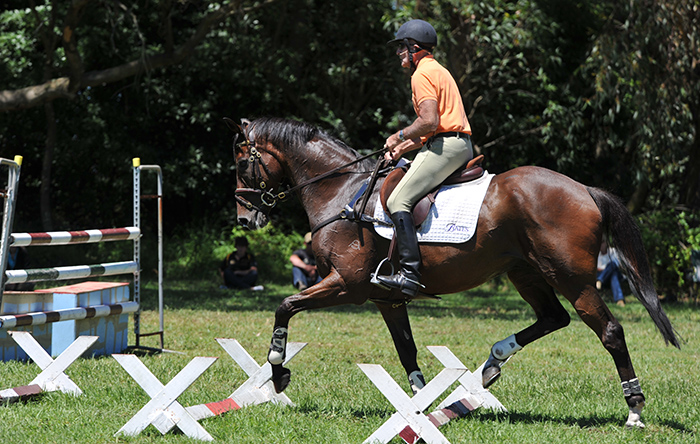
George demonstrates rhythm over cavalletti
Time for the group to ride over some cavalletti. “The first thing is not quick, the second, is straight. This exercise is all about rhythm. There are exceptions, my horse, Sinjon, he never would do cavalletti. I told Bert de Nemethy, it doesn’t matter, he won us a silver medal at Rome! If they get quick, a little half halt, if they get slow, your first reaction should be both legs simultaneously. Don’t kick or tap, squeeze, tapping deadens the horse, and loosens the rider.”
more on how to use poles and cavalletti follows
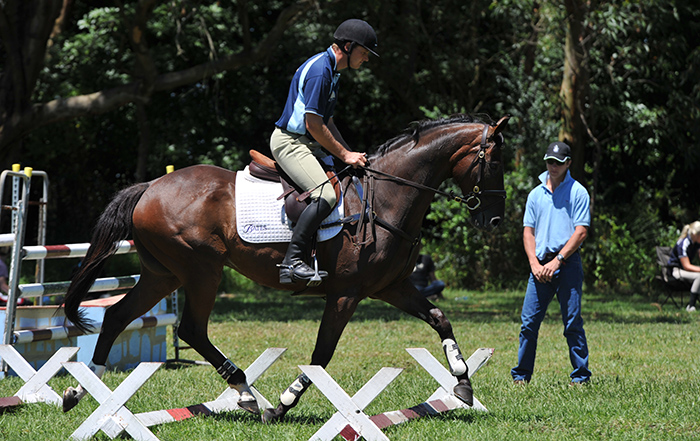
“Poles are always great because they don’t concuss the horse and they don’t scare the rider. You can even with a beginner first time on a horse, walk over a pole, even on a lead rope, in a jumping position, heels down, so you are teaching jumping, but you are not jumping. The same with the horse, you can lengthen to the pole, come back to the pole, angle the pole, and you are not concussing the horse.
Pole or cavalletti, they are the same thing, and the great beauty is that they are obstacles, but they are so low that they don’t physically or mentally confront the horse or the rider. They develop an eye, they are great to teach position, great for what I call ‘in suspension’, standing in the stirrups, which is developing position, balance. Poles are never wrong, but there are some trainers who get so locked into poles that they forget that you have to jump.”
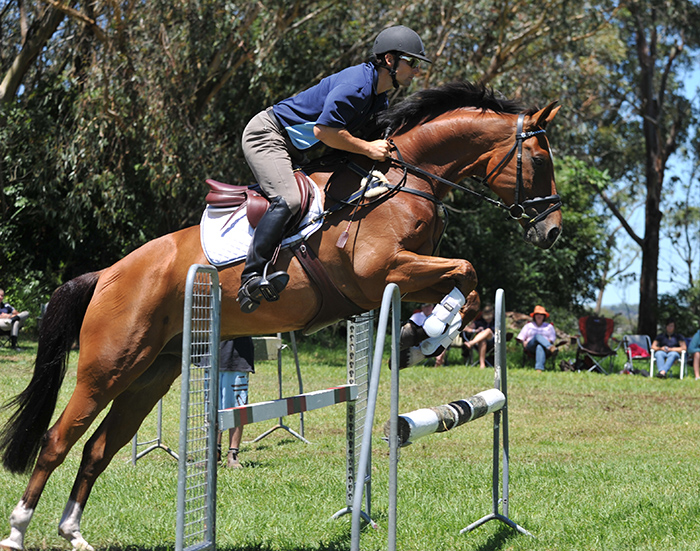
Again and again, the message was one of tactful riding:
“Don’t think of the jumping, think of the riding before the fence and after… it’s called dressage. First comes rideability, the horse follows the track of the course. When a horse raps a fence when you rode it beautifully, don’t punish the horse, that rap is punishment enough. Punish the horse and then it gets tense and has rails behind. You mustn’t punish a horse for a mistake, you have to stay cold no matter what happens. Horses will pay you back by getting tense and hitting fences, they are great modifiers of our behaviour. Repetition teaches – not force, not muscling.”
next an exercise to stop riders getting in front of the horse over a fence
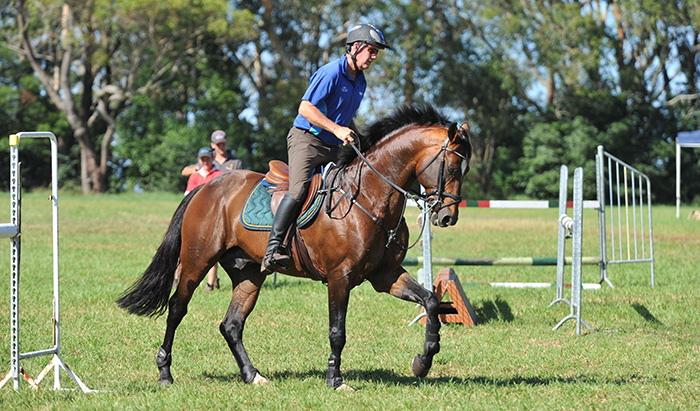
And George was anxious to modify our riders’ tendency to jump in front of the horse: “You people rush with your horses. As you go over this fence no matter what happens, watch my hand, I want your eyes, this teaches you to wait for the horse. Look at me and if you don’t know what to do, sit still.”
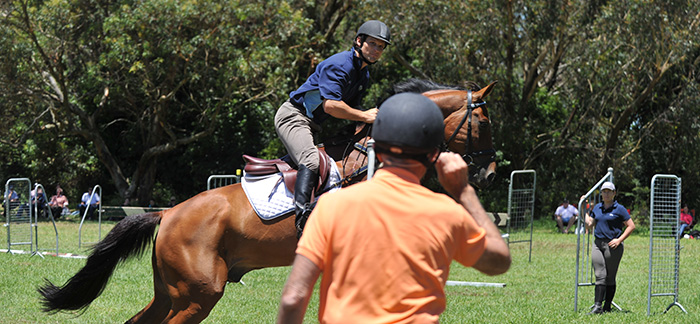
Still hands were an ongoing theme.
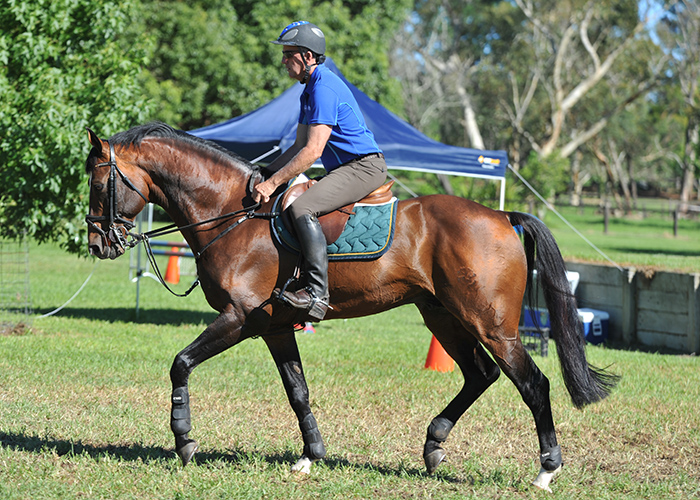
“Don’t think of shaping the neck, this awful left / right sawing. Don’t pull back and down. Hands steady, you have very very busy hands you young people…”

But George did notice the excellence of one young rider, “Jess (Mitchell) has the most steady hands.”
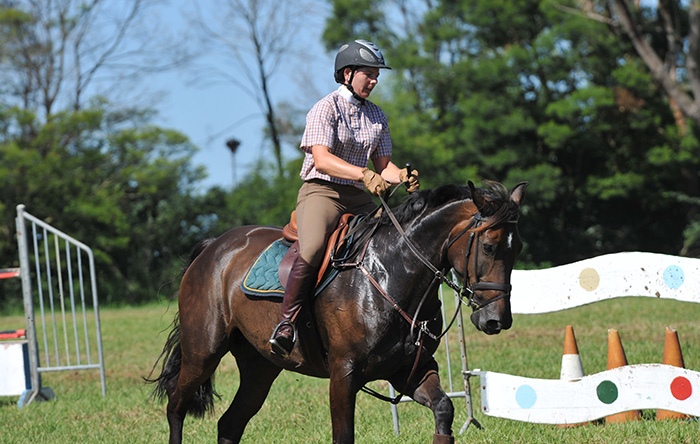
If the horse’s head comes up, raise your hand, don’t even think of pulling the head down.
But he had plenty of advice for the group: “If the horse’s head comes up, raise your hand, don’t even think of pulling the head down. Turn to the right, both hands to the right, turn to the left, both hands to the left. Close your fingers, lock the door. Ten strides forward, ten strides backwards, like an accordion. Push the horse into a light shoulder-in. If the head goes up, do not lower your hand, close your fingers and push. Think in shoulder-in of softly pushing the head down, with equal pressure on both hands.”
The American system of jumping has often been associated with the crest release system, and while George’s system has a place for the crest release – ‘good technique, but over done’ – he is more interested in the more sophisticated automatic release. So as the group of riders approached the rails with alternate ends down, they were enjoined to:
“Approach in trot, hands quite wide, and relax your arm. Over the rail either trot or pick up canter, let the horse do that. Sit perfectly still, don’t touch the horse’s mouth, follow it – you block by touching. The hands don’t touch the horse’s neck, they are alongside the neck. Wait for the horse – that is the great principle of getting to the fence, and waiting for the horse. Let the horse take you to the fence, relax and go with him. You are such hand riders, when it should be about teaching self-carriage to your horse.”
“As the horse turns the corner, soften and let the horse take you (to the fence). The horse has to teach himself self-preservation. If he gets quick use your voice and don’t grab his mouth. Bounces are wonderful because they work on the rider’s position and the horse’s ability to read the jump…”
The riders were once more working on George’s three fences on a bending line, more or less, four strides apart, working again on ‘the habit of consistent precision.’
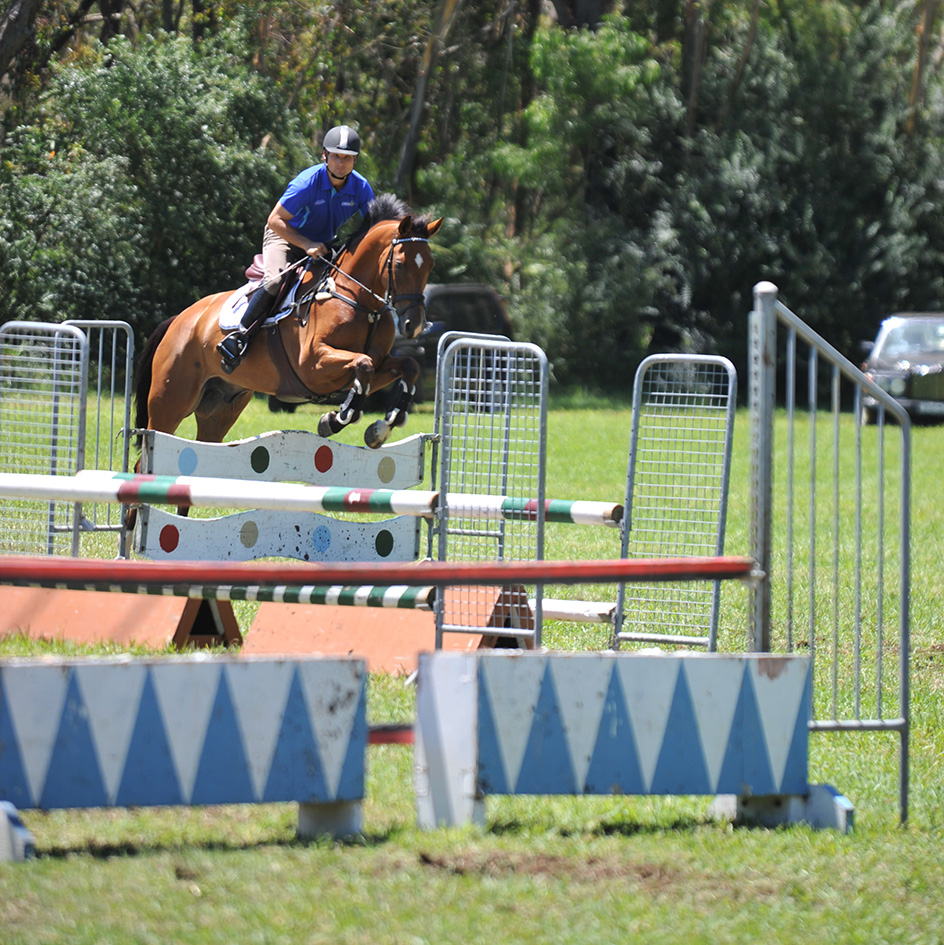
“This is a classic exercise – broken lines – in dressage it would be half pass zig zags. It is exactly the same as the dressage exercise, it gets the horse light in the shoulder.”
And light to ride: “That’s it Chuggie, self carriage – the holy grail of riding in every discipline.”
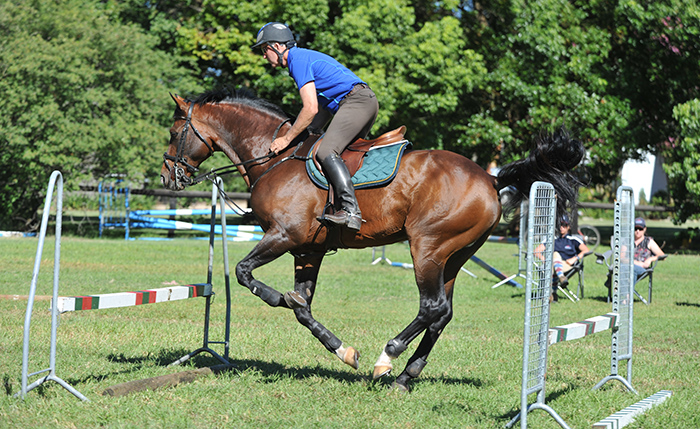
“Fences teach horses and we can see it in this clinic. First the bounce exercise, where the quickness of the bounce taught the horse. Also that serpentine type exercise taught the horse to jump well and turn quick and jump well, and turn quick and jump… Because horses by nature, don’t understand turn and jump. You have to teach the horse that, ‘Necko’ Pessoa taught us that years ago, right from the word go he would gallop a fence, and even with a young horse, angle the fence and make a short turn back, right from the start, he taught the horse the jump off, and that is my philosophy. At the recent Olympics and the WEGs course builders are looking for jump offs, and you need to school for that right off – it is not the first round, you don’t decide the event on the first round that’s not where it is at.”
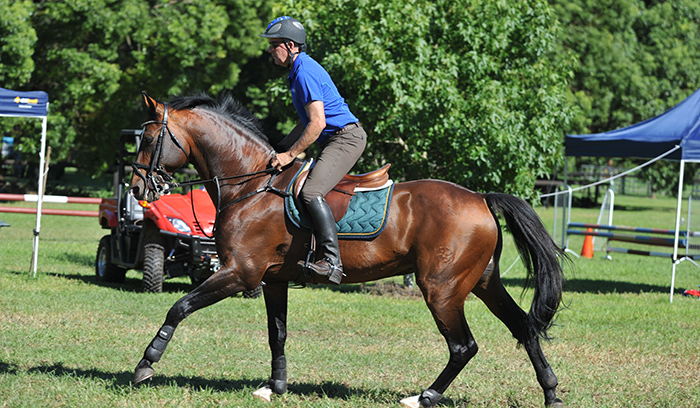
And you sit there wondering how much better all the horses would go if they did these exercises every day for a month, but then, that is what those wonderfully schooled American riders did, but for years, not months.
“Look at how Chugg is doing this exercise. He is playing with it, proper schooling is playing, four strides then three strides, playing. Even with an Olympic horse, you start low to get the horse soft.”
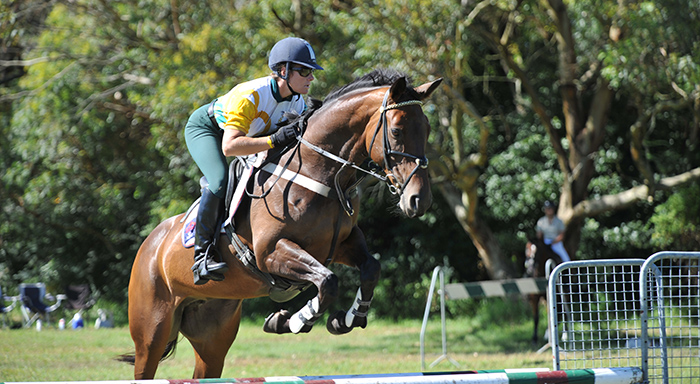
“Look at Wendy (Schaeffer), she’s a competitor. She tries everything – that’s ambitious, a straight line in threes. Now add, with that quick horse, add. You have to orchestrate distances, it is not that the horse takes you and does what it wants – place the horse.”
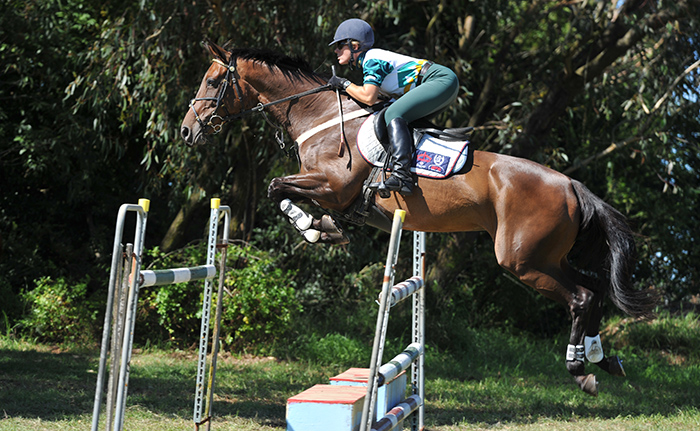
George was unhappy with the way many of our riders rode their flying changes:
“The flying change has nothing to do with the hand. Get rid of this hand riding, the flying change is nothing to do with pulling and bending to the inside, it is outside leg, outside leg. If the horse’s tail swishes or the croup comes up at all, this is a very big resistance to the leg. The judges shouldn’t give more than a 3 when that happens in a dressage test. Keep the horse as still as possible in front and mobilize the hind quarter. That’s how to get flying changes.”
letting the horse learn continues
Over and over again, the message, let the horse learn the lesson:
“If the horse rubs, repeat and go a little faster. Test the horse’s self-sufficiency. Absolutely, don’t help the horse in front of the fence or after the fence. With a seasoned horse, just go to the fence again, a little faster with less support.”
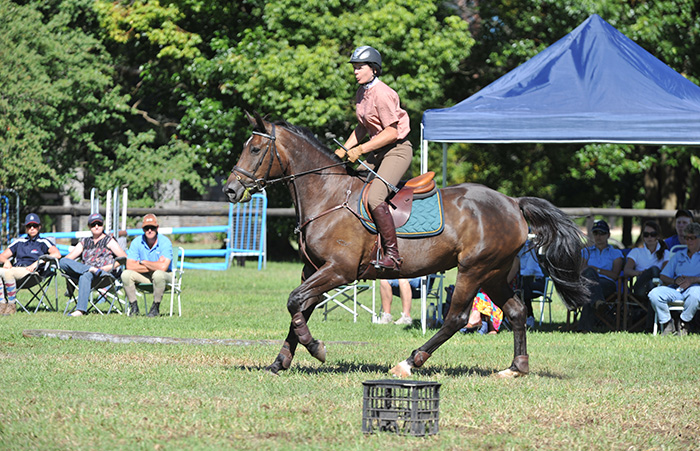
“We start with cavalletti, the next would be gymnastic work, the next would be segments of courses and natural fences – banks, ditches. That should be the next direction of showjumping. When I talked about it with Leopoldo (Palacios), he said ‘George where should we go with showjumping in the next years?’ He said to me, we have to have more natural fences again, and I said, yes. They test the schooling and the boldness of the horse, and they test the horse for the other jumps. I don’t know if it will happen because it is a lot of work to maintain those natural fences, the riders don’t like them because the unexpected might happen. I’m not holding my breath, but I think we have to go back to more natural fences.”
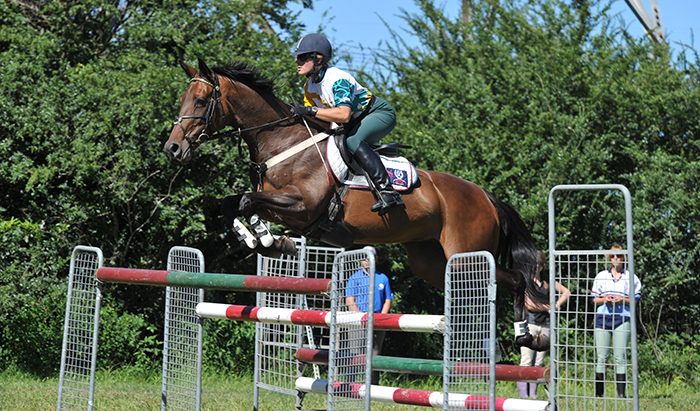
“Wendy, in eventing, it is land and charge away, here it is, land and allow. Circle, circle, it’s too tight, let go of the contact, don’t be too protective. Let go of the contact, drop, there you go, there you go, that’s it. Super horse. It is easy to get into the habit of over-collecting and sitting up. That’s okay for a trappy fence, but not every fence… go with the horse.

Chris Chugg and Vivant demonstrate ‘land and let go’
George genuinely delights in horses, over and over again he would exclaim: “My god, what wonderful horses you have… This is great horse country here, look at these horses, look at these horses…”
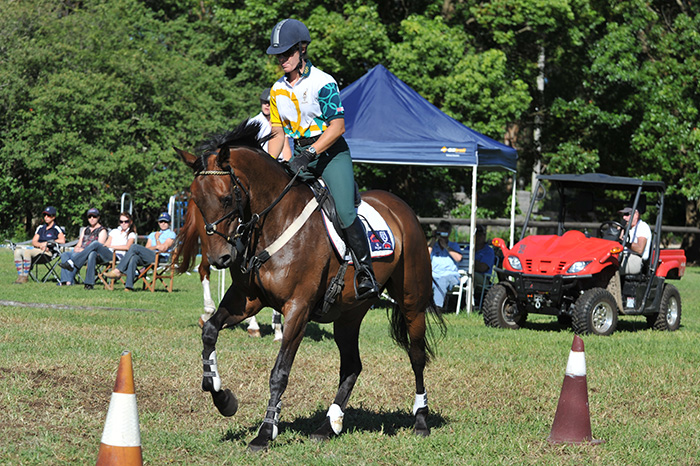
“Wendy, the only trouble with your horse is that I’m not riding it. That is my type of Thoroughbred. This is as good a horse as there is in this country, any country, this is a horse that can go anywhere.”
“You have wonderful horses, but don’t ever think you are good enough for your horse – your horse is better than you.”
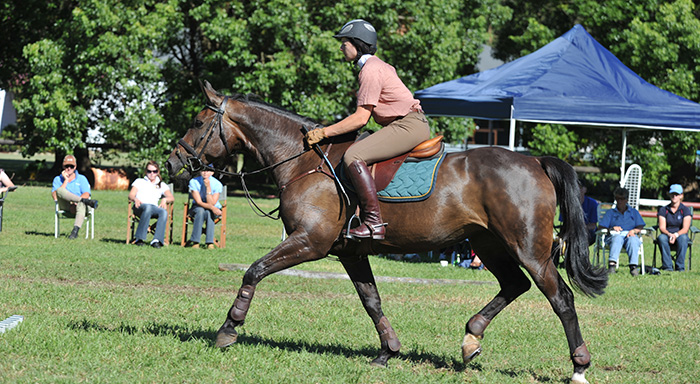
But those wonderful horses had to work, and it is back to the bounce rails:
“Separate your hands, lean forward, let him take you. Don’t GRAB!
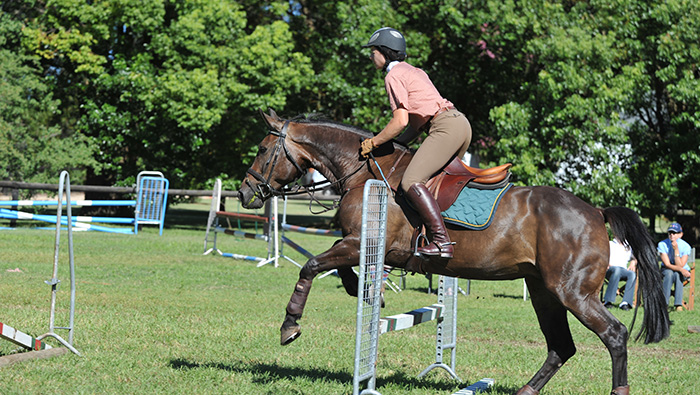
“This exercise fixes the seat and the rider doesn’t feel the necessity to jump in front of the horse. When the horse sights the fence, and takes the bit, go with that little pull. You keep the horse straight and he sets himself. Now try to ride them through faster because we have to teach them to set themselves up from a fast gallop.”
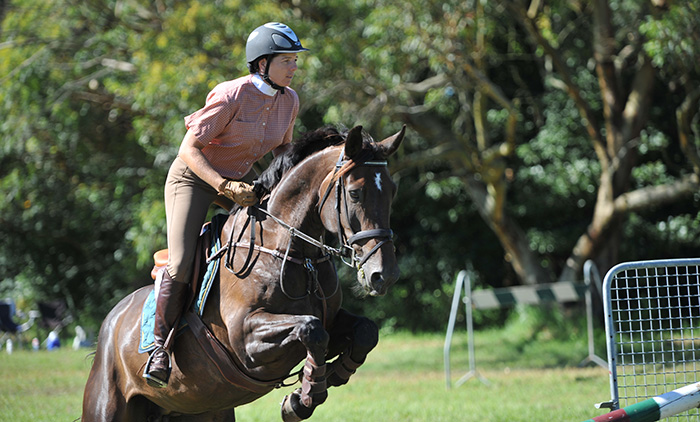
The message was also that jumps don’t have to be big to be effective. We were back to the three jumps on the S line exercise: “For these exercises, I don’t care if the horse is Authentic, or Sapphire, the jumps should not be over 4 feet. This is where we put together schooling light seat dressage and jumping – put together in an imaginative and intelligent way. Watch your horse’s expression, not just the jump – look at the ears, eyes. I prefer a big brown limpid eye. I pick horses by how they look through the bridle, not just how they jump. Don’t do straight line gymnastics because at least 60/70% of today’s courses are bending lines, do broken line gymnastics.”
“Look at Colleen (Brook), she makes the horse light, agile and supple, that’s what teaches a horse, not the height of the fence…”
Over and over, George would discuss the importance of the seat, and the riders position in the saddle ‘it is especially important with these Thoroughbred horses, Thoroughbreds can’t tolerate a heavy seat, they won’t take the weight on their loins…’ And to emphasise the difference, George had the group members ride the fence in the three possible positions:
“Gallop to the fence, six strides from the wall, back to a slow sitting trot, and open the chute. This is your defensive position, when you don’t trust the horse. Next time come in, in collected canter, but still don’t trust the horse. Collect, open your hips, keep your upper body erect, don’t trust the horse, this is what I do if I am not sure… As he takes off, you have to catch up – that’s the difference with being behind the movement. He’ll throw you out of the saddle, there is no need for you to jump. Now ride it in the forward seat, sink into the crotch, that way it is easier for the horse and the rider, and it is faster, that is the advantage of with the motion jumping.”
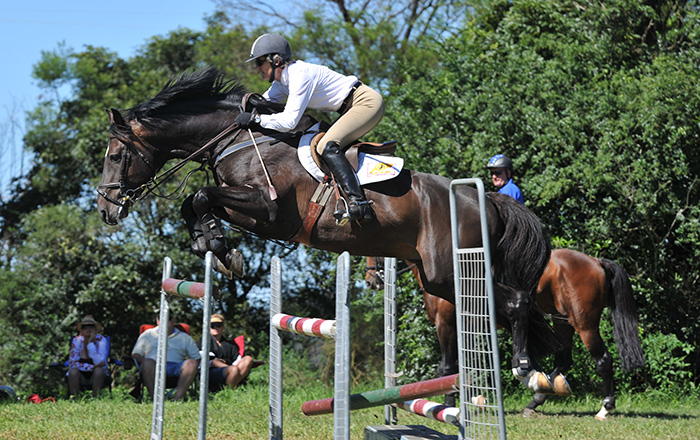
Always it is the responsibility of the rider to make it happen: “We kid ourselves the problem is with the horses, no – the problem is with the riding and the schooling. Ride it beautifully then with repetition, a good horse gets better, a bad horse never will. Good horses properly ridden teach themselves about jumping.”
“Horses and your mistakes are your best teachers. Not me. Your horses and your mistakes…”
And life for the jump helpers hadn’t got any easier since George was last in the country, but there was a reason for his grumpiness and of course, it related to the horse: “If the horse has a problem you have to re-build the fence quickly, the horse has to keep jumping or it will lose confidence. If you stop a horse and he gets cold, he’ll retreat.”
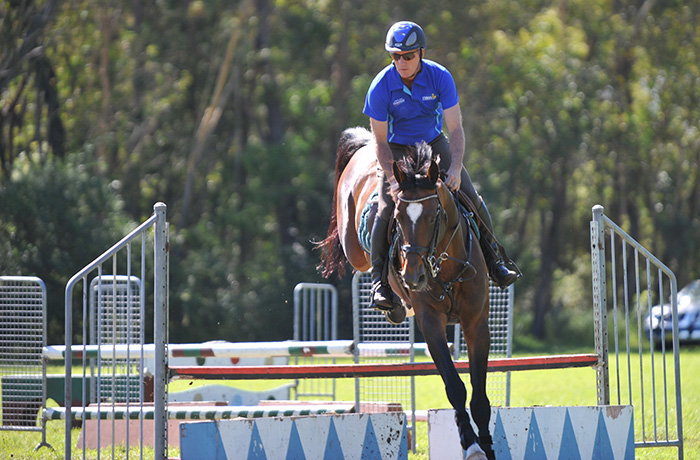
So many of the exercises were so so simple…
“I want you to trot a little vertical and canter away. As you approach, relax your arms, stay forward. The horse’s back is critical, I am obsessed with the light seat because of the horse’s back. If you sit back, your heels will come up and there will be no weight in the stirrup. Stay forward, with your heels down, sink into the saddle, squat not sit. You have to trot fences, it is very good for the horse’s bascule. Land in your heels to absorb the shock. Most people complicate the sport and interfere with the horse, not Caprilli, he was a genius, he didn’t interfere with the horse’s body or mind.”
But it was all about the rider’s mind. George hates to see riders circle in front of a jump: “Jump the triple bar, don’t circle because you don’t like the distance – people, this is a thinking sport, you have to develop your brains.”
And those brains were supposed to ensure that if George asked for nine strides between the fences, that’s what he got…
“This course wasn’t insoluble. I wanted nine – precision, and precision is only interesting if you do it over and over. Put Beezie Madden on every one of your horses and she would have done it in nine. She wouldn’t even have to ride the horse before, just get on, and do it in nine.”
Again and again, the message repeats itself – rough riding has no place in any sort of equitation, let alone jumping:
“Rough distracts the horse and it can’t focus on the fence. You have to be strong, very strong occasionally, but rough is not good because the horse looks back at you, and then he’ll hit a jump. I was a hot blood, and horses taught me to be cold. Once you get worked up, you make mistakes. That’s why I love Beezie Madden because she is cold, her mentality is cold. Hot is okay after hours, but not on the horse… In my country riding has deteriorated because we don’t ride Thoroughbreds any more, and Thoroughbreds teach us tact.”
And these regular visits from George Morris teach us how to be thinking riders – how to develop that rarest of qualities, equestrian tact. I thank him once again for his patience with my endless questions, and the time he is prepared to give, talking about the sport he loves…
Breeding showjumpers? Eventers? There’s an amazing range of top stallions available from International Horse Breeders, www.ihb.com.au
Like Chacco Blue, currently heading the WBSFH Rankings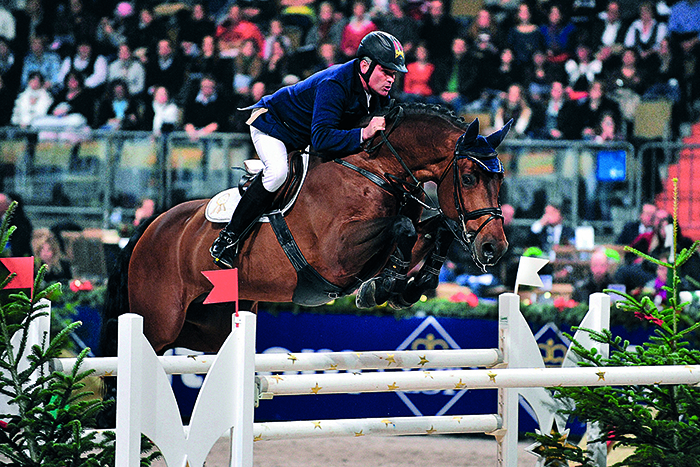

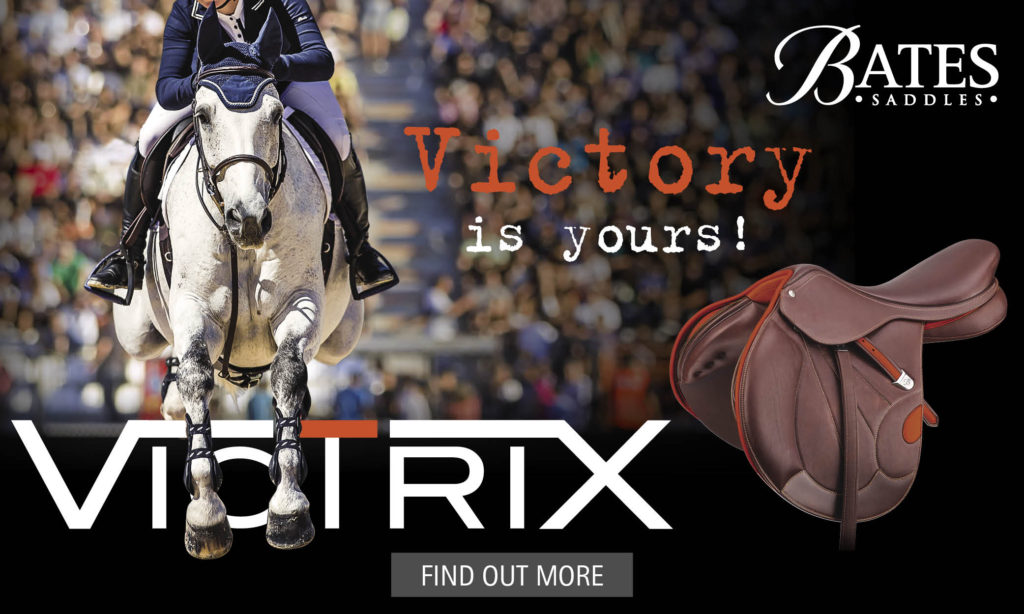
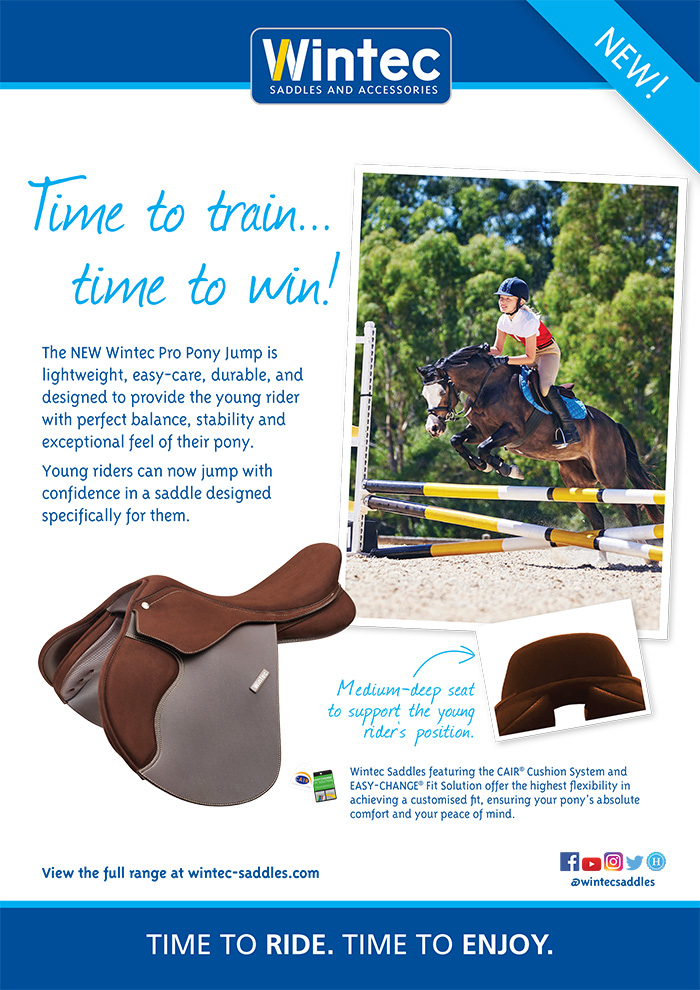

Very nice article and I feel that he is describing the real sense of good position & riding.